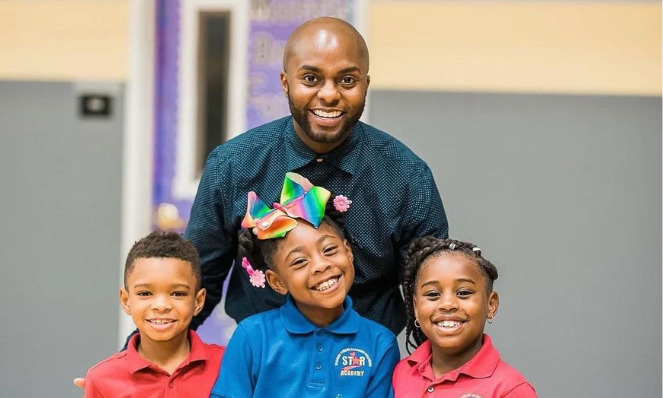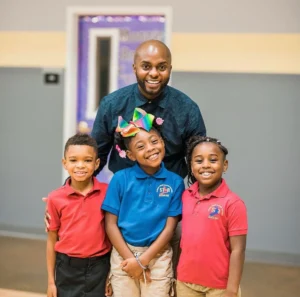
3 ways to transform PLCs—and what to watch out for
I’ve had the privilege of serving the staff and students of STAR Academy in Memphis, TN as school leader for the past seven years. In that time, our teachers and leaders have embraced a culture of continuous growth and improvement, and we have seen firsthand how this iterative, collaborative mindset translates to tangible student growth.
Last year, our team identified student engagement during core instruction as an area for improvement. Working alongside Instruction Partners, we created a plan to use our existing professional learning communities (PLCs) to support teachers in anticipating and leveraging opportunities for deeper student engagement.
As a result, our students, teachers, and leaders are experiencing accelerated growth and show no signs of slowing down.
Using PLCs to boost student engagement
Teachers need flexible, targeted support to prepare to deliver high-quality, engaging lessons. In our experience, when done right, PLCs offer the best bang for our buck in terms of providing collaborative planning opportunities for teachers.
While we already had PLCs in place, we knew we weren’t making the best use of that precious time together. So, we stepped back to explore how we could provide teacher development opportunities that emphasized meaningful engagement as an opportunity for driving student learning.
Using this rubric, we determined that our PLC time was often not directly related to teachers’ in-the-moment needs. PLCs often became an extension of general faculty meetings, covering anything that felt urgent or timely. In truth, as a consequence of my multifaceted role, I realized I wasn’t making time to prioritize critical instructional support. I hadn’t kept the main thing—continuous teacher support and instructional improvement—the main thing.
To provide more focus around our collaborative planning time, and to hold ourselves accountable, we crafted this theory of action:
If leaders establish a vision for effective collaborative planning, then teachers can:
1) prioritize and sequence questions in complex texts for ELA instruction and
2) plan specific questions during student-discourse as a means for checking for understanding during math instruction.
This will allow students to do the heavy lifting of the lessons, lead discussions, and share their thinking in class.
Three steps to transforming PLCs
Here are three ways we transformed our PLCs to better meet teachers’ and students’ needs, as well as the challenges we encountered along the way and how we navigated them together.
1. We set and shared a vision for collaborative planning.
When considering the sequence of work we were undertaking, we knew we had to get really clear on what we wanted our PLC time to look like and the outcomes we wanted to see. Our first step was to meet as a coaching group to craft a vision for collaborative planning time, then make sure teachers had clarity around that vision.
Watch out for creating a vision in a bubble—it can’t be a top-down decree. It was critical to understand the workload and daily requirements and responsibilities of our teachers, to determine if there was something on their plates we could remove, and to incorporate their voice into our vision.
We vetted our draft vision with a teacher focus group and included much of their feedback in the materials related to lesson internalization. By including their voice, we honored teachers as part of the change, strengthening teacher investment and letting us tap into their critical, on-the-ground expertise.
Also, watch out for putting your vision up on a shelf and thinking the work is done. Teachers and leaders can’t realize a vision if they don’t know what it is or the way to get there. After creating our vision, we articulated both the what and the how of our vision in multiple ways: verbally, via email, in our weekly teacher newsletter, and as part of our weekly coaching cycles. In addition, we formally introduced the new PLC protocol during an onsite professional development day, where we modeled the protocol with actual lesson plans, texts, and associated student-facing materials.
2. We stayed grounded in the curriculum.
As leaders, we often feel as if we have to reinvent the wheel when it comes to teacher development, but by doing that, we risk losing our connection to the HQIM we already have in place.
To get the most out of HQIM, teachers must ask questions and prioritize tasks that help students reason with the main content of the lesson. These types of instructional decisions require a strong internalization of the overall themes and connections across a curriculum.
We leveraged internalization protocols to deepen our understanding of the curriculum and guide teacher thinking while preparing for PLCs (here is a resource you can use for unit internalization in math, and here is one for ELA).
The tools we developed helped teachers dive deeper into our materials. Because we aligned our planning to our curricular resources, teachers were able to look at a lesson, consider areas where students may have misconceptions, and plan for those in advance. For example, if students had issues with accessing a particular portion of a text, teachers crafted some back-pocket questions and scaffolds to support students with grade level–appropriate meaning-making.
By staying grounded in the curriculum, our planning tools inherently lent themselves to providing deep support of curriculum implementation—teachers did not feel like this process was in isolation of what they were going to be putting in front of students.
Watch out for becoming too rigid. We learned that there is no one right way to implement a single collaborative planning protocol that centers the curriculum; the protocol that fits the school’s vision and desired outcomes will depend on context. Meet your teachers where they are, and schedule your support on a cadence built around your teachers’ expressed needs—that will not only affirm the current abilities of your teachers, but also promote their continued growth. The tools we built with Instruction Partners allowed us to be a thought partner with teachers versus feeding them information without adequate context or support.
As you implement internalization practices, monitor your progress so you know what’s working and not working, then adjust accordingly. I recommend using Instruction Partners’ unit internalization rubric to document progress toward intended outcomes and help inform decisions about next steps.
3. As leaders, we modeled the change we wanted to see.
Changing routines is hard. Effectively managing through change meant I had to model my own learning and growth.
With a brand new process, it was important that facilitators felt adequately prepared to lead interactions with teachers, to be the expert in the room, but also to create space for collaboration with teachers. I had to consider capacity building for the other leaders in the school, so I decided to invite coaches to observe my planning for internalization meetings with teachers as well as my facilitation of those interactions. After that, I gave coaches an opportunity to reflect and determine which practices they could incorporate into their own meetings. This also required me to schedule facilitation, planning, and practice sessions with them so that I could provide adequate feedback to support their continued growth.
Watch out for feeling like you’re alone in the work. Modeling change requires leaders to be vulnerable and open to support. I teamed up with Instruction Partners to help me every step of the way, from determining the proper meeting cadence to co-creating agenda templates to helping us prepare for interactions. They served as co-observers, co-planners, and co-facilitators of internalization meetings, and they created teacher-facing materials that promoted our curricular deep dives. Not only did this build my skills as a leader but it also produced practical, tangible, reusable materials.
The Results
Since initiating this work, we have increased the number of students who meet or exceed proficiency standards in ELA and math—by 13% and 5%, respectively—for all tested grades as measured by the TNReady assessment. In addition, we reduced the number of students who need Tier 2 and Tier 3 instruction in isolation, and received a Rewards School designation based on our annual measurable objectives.
Student engagement is also on the rise. In the past, we implemented turn-and-talks to check the student experience and collaboration box. Now, after providing deeper support for teachers to prompt student discussions, our students ask their peers questions about each other’s work and responses, reflect on their own work, and are better able to articulate any self-identified areas for growth.
Our teachers are thinking more critically about content and what it means for individual students to engage and participate; they are also allowing students to do the heavy lifting in the lesson. Teachers come to collaborative planning meetings ready to engage with whatever content we’re covering. They are more flexible and better able to adapt student-facing materials to make sure they meet the demands of the standards.
On a personal note, I’ve gotten better at supporting teachers. I’ve adjusted my schedule and priorities to ensure I have adequate time to plan for teacher interactions, to lean into those aspects of the lesson that may give students a difficult time, and to identify new ways to help teachers scaffold student learning.
Lastly, as a leadership team, we continue to revisit the enabling conditions for effective teacher development. Leaders will always have things vying for their attention, from teacher shortages to frequent student absences—we have to be nimble, open to tweaking our plan as needs change, but never abandoning the plan. We must always remember to keep the main thing, the main thing.

Photo via STAR Academy: Principal James Johnson with students.


